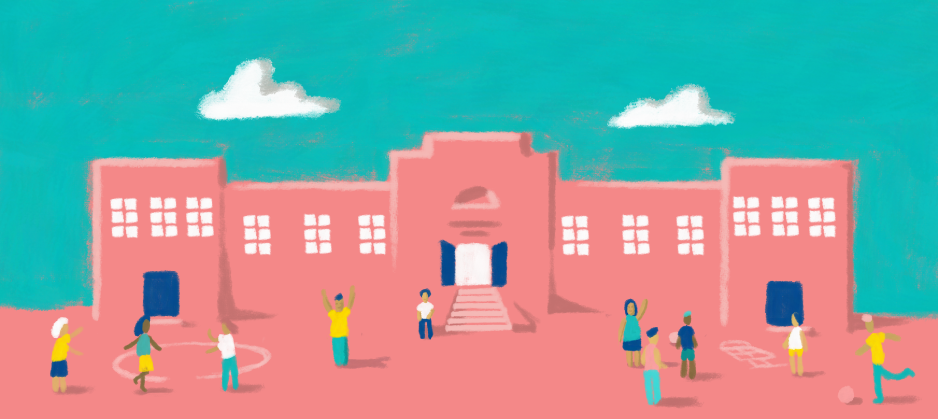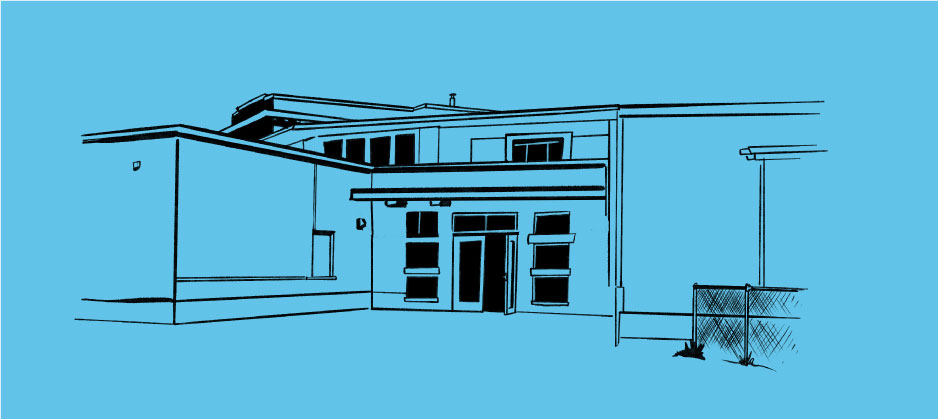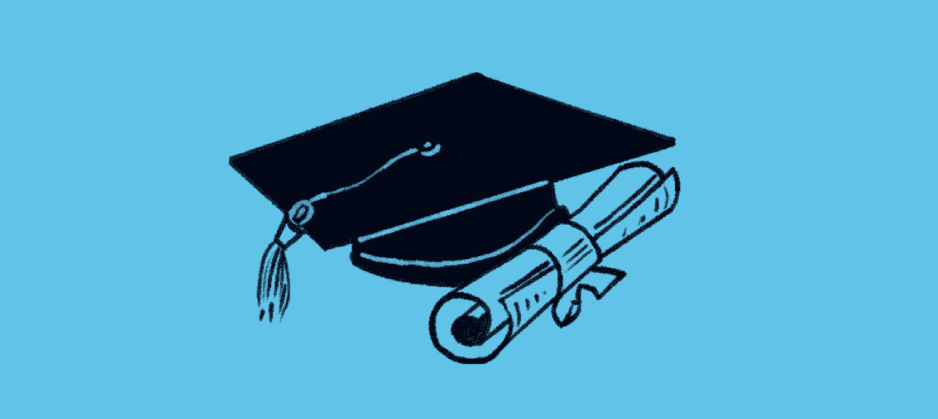Students in B.C. will return to in-class learning September 2020. B.C.’s plan includes new health and safety measures, increased funding for protective equipment like masks and new learning groups to help keep everyone safe.
Last updated: August 26, 2020
What Parents Need to Know
- Our plan
- Health and safety measures
- Increased funding
- Learning groups
- Orientation week
- COVID-19 science and children
- COVID-19 protocols
- Education requirements
- Supporting additional needs
- In the classroom
- Outside the classroom
- Back to school plan examples

Our Plan
B.C.’s Back to School Plan is built on three core principles to keep everyone safe.
1. New health and safety measures
2. Increased funding to keep schools safe and clean
3. Learning groups to help reduce transmission
Health & Safety Measures

Special safety measures help create safe schools and reduce the spread of COVID-19. These extra layers of protection measures work well in schools because they’re controlled environments that have:
- Consistent groups of people
- Robust illness policies for students and staff
- The ability to have most people follow effective personal practices like hand washing
Health Guidelines
Practicing physical distancing
Practicing hand hygiene
Resource posters
Print-ready posters to promote important safety practices:
- How to stay safe (PDF, 1MB)
- Sick? Stay home (PDF, 1.4MB)
- Don’t share personal items (PDF, 2MB)
- Wash your hands (PDF, 965KB)
- Sanitize your hands (PDF, 564KB)
- Wear your mask (PDF, 1.4MB)
Increased Funding

An additional $45.6 million will help schools implement new health and safety measures.
The investment includes:
- $23 million for more staff and staff time for cleaning schools
- $9.2 million for hand hygiene
- $5.1 million for cleaning supplies
- $2.2 million for reusable face masks for students and staff
- $3 million to support remote learning, including:
- Technology loans
- Software to support students with disabilities or complex needs
- $3.1 million to independent schools
Learning Groups

A learning group is a group of students and staff who remain together throughout the school quarter, semester or year and who primarily interact with each other. Learning groups were recommended by the Provincial Health Officer to help reduce the transmission of COVID-19.
For example, a learning group could be made up of:
- A single class of students (20-30)
- Multiple classes that sometimes join together for activities like physical education (PE) or music
- A group of secondary school students with the same courses in the same quarter or semester
Learning groups can also include staff, like:
- Teachers
- Specialist support staff
- Education Assistants (EAs)
Learning groups provide a range of benefits for students including more in-class learning time, increased peer interaction and support, and decreased feelings of isolation.
Why Use Learning Groups?
Compared to other public settings, schools have a relatively consistent set of people accessing the building. Learning groups further reduce the number of interactions between students and staff.
- This helps with contact tracing and limits interruptions to learning if a case of COVID-19 is confirmed in a learning group
Learning group sizes
Learning groups are smallest in elementary and middle schools because it is more challenging for younger students to maintain physical distance.
Students in secondary school are better able to minimize physical contact, practice hand hygiene and recognize if they are experiencing symptoms of COVID-19.
- Elementary: 60
- Middle: 60
- Secondary: 120
The PHO order on mass gatherings does not apply to schools, as events are defined in the order as an irregular gathering, like a party or celebration.
Learning group examples
The following examples are for illustrative purposes only. Actual configurations of learning groups will be designed by school districts and independent schools to meet local needs and other considerations in alignment with health and safety measures to protect students and school staff.
Orientation Week
Schools will be in touch with parents with further details about the return to school. To ensure all schools are ready to welcome students into classrooms for the week of September 8-11, 2020, there will be a gradual restart. This gives students and staff extra time to learn about the new health and safety measures in their school and classroom.

September 7
Labour Day, schools are closed.
September 8 and 9
Starting September 8, all staff will meet with their school’s joint health and safety committee to receive instruction on how the updated BCCDC guidelines will work in their school. This time allows teachers and staff to:
- Adjust to their new routines
- Finalize plans for learning groups
- Review health and safety protocols
- Confirm lesson plans that align with the new normal in schools
September 10 and 11
Students will return to school by September 10 for orientation. Check with your school district to confirm details.
Students can get familiar with classrooms that will look different than they did before the pandemic. During orientation, students will:
- Get assigned to their class or classes
- Find out who is in their learning group
- Practice their new routines
- Familiarize themselves with how to safely move from the class to outdoor and common areas of the school
COVID-19 Science & Children
According to current worldwide data, COVID-19 has a very low infection rate in people 19 years old and under, and especially low in children under the age of 10.
Serological tests have confirmed that in B.C., less than 1% of all children tested have been COVID-19 positive.
Studies show that most COVID-19 cases in children originate from symptomatic adult family members, not from peers. Even in family bubbles, adults appear to be the primary spreaders of the virus.
Children who do test positive for COVID-19 usually have milder symptoms, such as a low-grade fever, dry cough, and gastrointestinal issues.
What has B.C. learned from the reopening of schools in other places?
Due to widespread, worldwide school closures, there are few studies on the effects of COVID-19 transmission in school settings.
In places that have resumed in-class instruction, children do not appear to be the primary spreaders of COVID-19.
In schools where there were confirmed cases, there was typically minimal spreading beyond the initial case.
Studies have shown that closing schools and child care facilities has significant negative mental health and socioeconomic impacts on vulnerable children.
COVID-19 Protocols
Stay Home When Sick
The BCCDC guidelines for schools are firm. If a student, staff member or any other adult has any symptoms of a cold, influenza, COVID-19, or any other infectious respiratory disease, they must not enter the school.
Students, staff members and any other adult must stay home and self-isolate if they have:
- Symptoms of COVID-19
- Travelled outside Canada in the last 14 days
- Identified as a close contact of a confirmed case or outbreak
This includes the children of essential service workers.
Daily Health Screening
Parent & caregiver responsibilities
Daily screenings start at home. Ask these questions:
- Does your child have the symptoms of a common cold, influenza, COVID-19, or other infectious respiratory disease?
- Has your child been outside Canada in the last 14 days?
- Has your child been identified as a close contact of a confirmed case or outbreak?
If the answer is yes to any of these questions, you must keep your child at home, self-isolate, and seek care from a health-care provider.
School administration responsibilities
Ensure staff and other adults know they are responsible for assessing themselves daily for symptoms prior to entering the school.
Clearly communicate with parents and caregivers that they are responsible for assessing their children daily before sending them to school.
Testing Students Before a Return to School
At this time, it is recommended that only people with symptoms or people otherwise identified by a health professional should be tested for COVID-19. This includes children.
Testing can also result in false positive and false negatives for the following groups:
- Asymptomatic people
- Those who are very early on in the illness
- Those who may be incubating the disease
What if someone in my household or bubble has COVID-19 symptoms?
- Students or staff may still attend school if a member of their household has cold, influenza, or COVID- 19-like symptoms, provided the student/staff is not sick
- It is expected the symptomatic household member is seeking assessment by a health-care provider
What if my child has allergies?
- Students and staff who experience seasonal allergies, or other COVID-19-like symptom that are related to an existing condition, can continue to attend school when they are experiencing these symptoms as normal
- If you notice a sudden change in the severity or type of symptoms your child normally experiences, you may want to keep your child at home and seek advice from a health-care provider
Confirmed Case of COVID-19 in a Learning Group or at School
If a student or staff member develops symptoms at school, protocols are in place.
- If a student or staff member develops symptoms at school, they may be given a non-medical mask and will be separated from their classmates or colleagues
- The individual’s parent or guardian will be contacted to discuss next steps
- Custodial staff will clean and disinfect the areas the person used
- Schools will immediately inform public health of a potential case
- Public health will then:
- Reach out and identify any potential cases
- Get in touch with close contacts
- Recommend 14-day isolation if necessary
- Provide follow-up recommendations if necessary
- Schools will provide learning support to students required to self-isolate
- Together, schools and public health officials will determine if suspending in-class learning is necessary
You will be notified if your child has been in contact with a COVID-positive person. If that happens, your child is required to self-isolate.
Education Requirements
In-Class Instruction
There is no substitute for in-class instruction. It provides students with face-to-face teacher-led learning, peer engagement, supports social and emotional development and decreases feelings of isolation.
School also provides many students access to programs and services they can’t get at home and is integral to their overall health.
School districts will contact all families in their school community to share their safety plan and confirm if they plan to have their child attend classes in September or require an alternative learning option.
The Ministry has given school districts the flexibility and certainty to find options that work for families.
- This includes the authority for all school boards to offer remote options to students within their districts, as well as the tools they need to increase their existing programs to meet demand
Other Options
Every September, parents have options for their child’s education.
Parents should talk to their school district as soon as possible about their options.
Online and distributed learning
Both public and independent distributed learning schools offer distributed/online classes. Students in kindergarten to grade 7 must take a full course load at one school, while students in grades 8 to 12 may enrol in courses in a number of different distributed learning schools at one time.
There are 48 school districts with 56 public schools offering distributed learning courses. Sixteen independent schools are currently offering distributed learning courses.
Homeschooling
Homeschooling is typically led by a family member who delivers an educational program to a child at home.
Note: Homeschoolers are not eligible to receive a British Columbia Dogwood Graduation Certificate.
Homebound education
Homebound education services allows students to continue their education program if they are absent from class during the school year because of injury, illness, surgery, pregnancy or mental health reasons.
For the 2020/21 school year, medical reasons related to COVID-19 are eligible, including a family or household member that is medically compromised and susceptible to COVID-19.
To access homebound education services, parents and caregivers must contact their school.
Supporting Additional Needs
Students with Complex Medical Conditions
Parents of students who are immune-compromised or have underlying medical conditions are encouraged to consult with their health care provider to determine their level of risk regarding return to school.
If a medical professional determines that a student cannot attend school due to their health risks, the school district will work with the family to review alternative learning options for the student.
- Students who need to stay at home because they are immune-compromised will have an at-home learning plan and will be provided with an educational program by their school district
- This may include providing assistive technologies to help students learn remotely
Review COVID-19 and children with immune suppression information from the BCCDC.
Students with Disabilities, Diverse Abilities
Students with disabilities, diverse abilities or those who require additional supports will have access to and receive the same supports and services they had prior to the pandemic.
- The way supports are provided may look different, but all students will have access to a learning environment and the opportunity to have their learning needs assessed
Students who require additional supports will be identified through a needs assessment. School districts and independent school authorities will then develop continuity of learning plans for those students to ensure equity of access to learning.
- Continuity of learning plans will align with the goals identified in a student’s Individual Education Plan (IEP)
- They will be developed in consultation with parents/caregivers and the specialists who typically support the student, like education assistants (EAs), non-enrolling teachers, speech language pathologists and occupational therapists
International Students
We continue to support international students coming to B.C. to study.
All students who have travelled outside of Canada are required to self-isolate for 14 days under both provincial and federal orders. This includes students who are attending school from abroad.
Students will return to the classroom by September 10, 2020. International students should arrive in B.C. no later than August 26, 2020 to complete their 14-day self-isolation. This can be done with a host family or with the help of federal government officials.
Indigenous Students
The Ministry fully respects the jurisdiction of First Nations and their right to make their own decisions on re-opening First Nations schools. Visit the First Nations Schools Association website for the latest updates.
For those Indigenous students that attend public schools, school districts will engage with First Nations and Indigenous peoples as a part of their planning process.
School boards and independent authorities must ensure Indigenous rightsholders are engaged in meaningful consultation and must work directly with First Nations to develop plans for any First Nations students living on-reserve and attending public school.
- School boards and independent authorities must also work with Metis Nation for plans for Metis students attending public or independent schools
- Boards must identify Indigenous students whose educational outcomes may have been negatively impacted during in-class suspension, with support planned and prioritized
In the Classroom
Instruction & Supports
- A focus on mental health and well-being supports for students returning to school. School boards and independent authorities will regularly monitor and assess how changes to the delivery of education are impacting the mental and emotional wellbeing of students and staff
- Full-time instruction for students with disabilities/diverse abilities and students requiring additional support
- Options for students with underlying complex medical needs
- Alternative methods of delivery, jointly determined by boards of education and First Nations, for students from First Nations that remain closed and will not be sending students back in September
Curriculum, Assessment & Report Cards
The return to full in-class instruction in September will include the following:
- Provincial curriculum for all students at all grade levels
- Regular report cards
- Regular assessments at the classroom and provincial level
School boards and independent authorities must ensure activities, assignments and assessments are accessible to all students and families, as appropriate for any in-class, remote or blended (hybrid) learning.
School districts must also meet the requirements of British Columbia’s Student Reporting Policy. The policy provides significant flexibility for schools and school districts on the content and format of report cards.
Grad Program
When in-class instruction is being supplemented with self-directed or remote learning, the focus will remain on ensuring students are making progress towards completing their graduation requirements.
Inclusive Education
Students who require more support in school will have full-time, in-class instruction available without any delays.
- Education assistants will continue to support students and teachers, both during in-class instruction and remote or online learning
- Children and youth in care will have priority access to technology, child care, in-class instruction and additional supports
Outside the Classroom
Recess, Lunch & Break Times
Students will remain in their learning group during recess, lunch and break times.
Students can socialize with a friend in a different learning group if they follow these rules.
Elementary schools
- Outdoors, minimizing physical contact
- Indoors, maintain physical distance
Middle and secondary schools
- Consistently maintain physical distance in all environments
Sports, Clubs & Extracurricular Activities
Extracurricular activities including sports, arts and special interest clubs can only occur if:
- Physical distance can be maintained between members of different learning groups
- Reduced physical contact is practiced by those within the same learning group
Assemblies, Concerts & Gatherings
Small gatherings can only occur within a learning group.
- A gathering can include the full learning group (60 or 120) and the minimum number of people needed to meet the gathering’s purpose
- For example, a parent-teacher conference would require one parent per student and a teacher
Assemblies, concerts and other large gatherings like a guest speaker should happen virtually.
Tournaments, competitions & festivals
All inter-school events including competitions, tournaments and festivals should not occur at this time.
Work Placements & Apprenticeships
School districts and independent school authorities will assess and determine if it is safe for students to remain on work placements and apprenticeships.
- For work placements that cannot continue in person, districts and schools will determine if alternate methods to continue learning or accumulate volunteer hours for work placements are possible
- Students are encouraged to talk to their teachers about work placements and apprenticeships
School Meal Programs
School districts with existing meal programs will continue to work with community partners to provide meal support to families in need, in alignment with current public health guidelines.
Back to School Plan Examples
While all school districts are following the same strict health and safety guidelines, B.C. is a diverse province and each school district has created a back to school plan based on the needs of their communities.
Large school district (SD 36, Surrey)
Mid-sized school district (SD 63, Saanich)
Smaller school district (SD 48, Sea-to-Sky)
Five Stages Framework

The Five Stage Framework outlines expectations for B.C. elementary, middle and secondary schools for learning during COVID-19
Info for School Districts

School districts and independent school associations are required to submit a Restart Plan before the 2020/21 school year begins
Contact Your School

Have questions? Your school or district is the best place to get help
